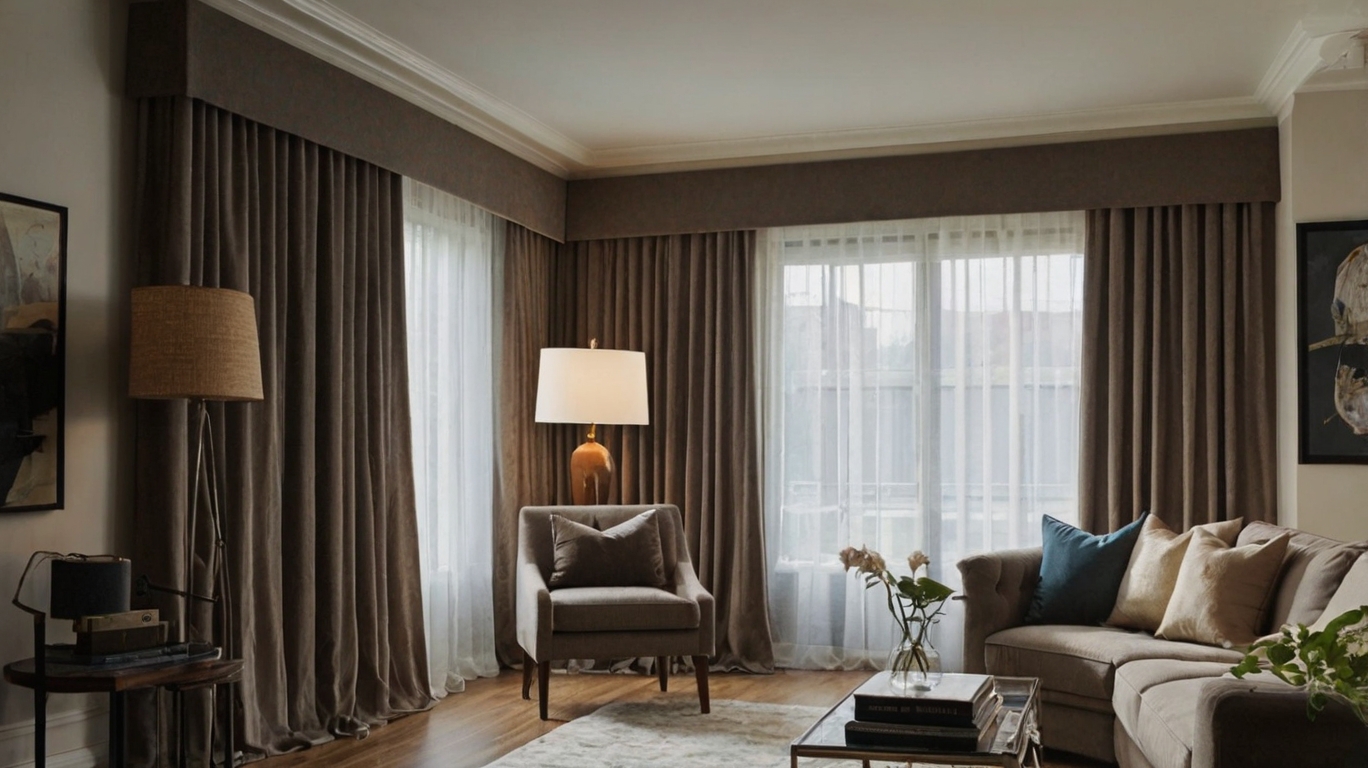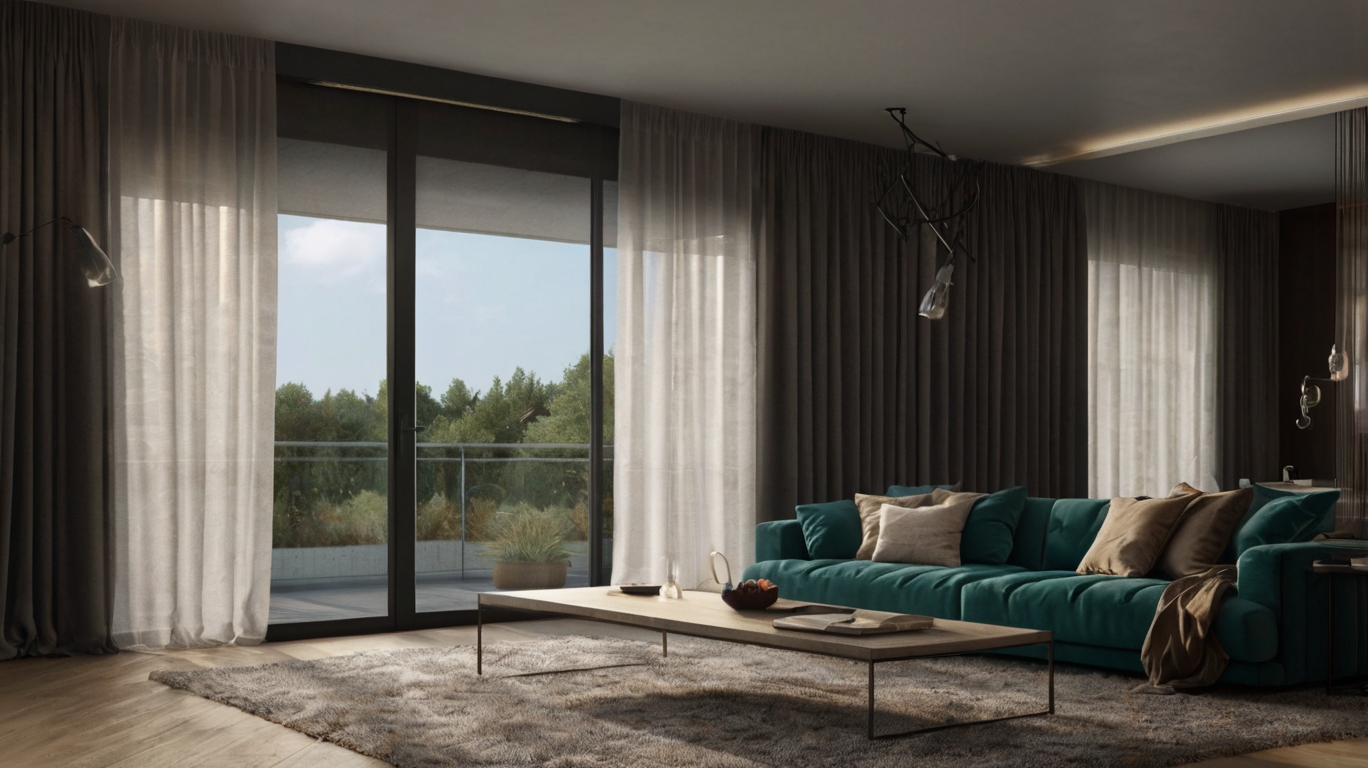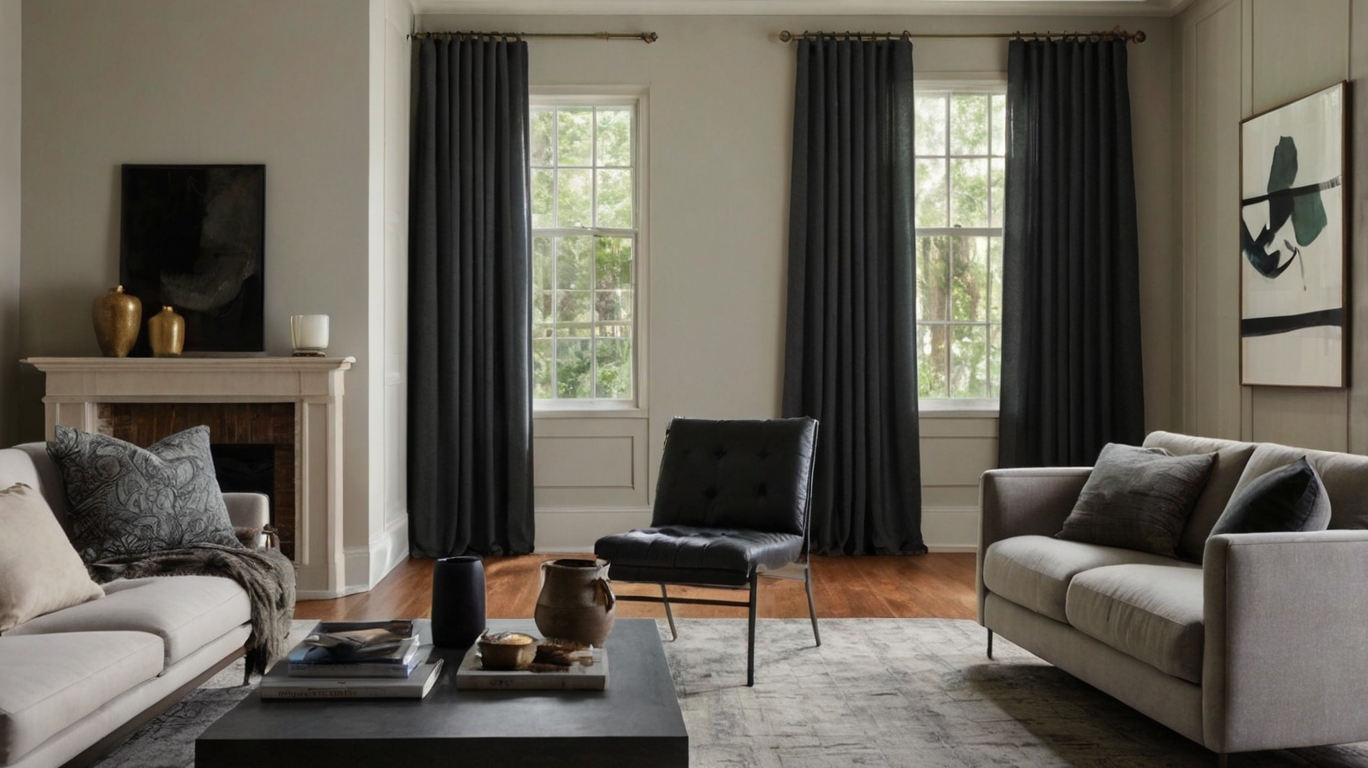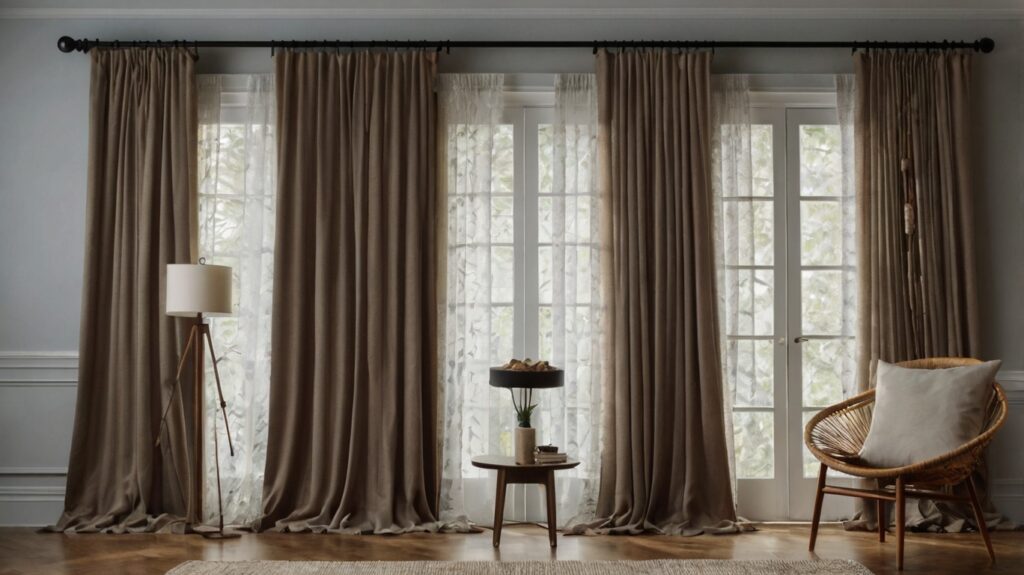Are outside noises constantly disrupting your peace at home? Whether it’s traffic rumbling, neighbors chatting, or construction clanging, unwanted sound infiltration can turn your sanctuary into a stress zone. Most homeowners don’t realize that windows and doors are the primary culprits for letting noise pollution seep in—and that the right curtains can make a dramatic difference. Let us discuss in this blog 3 best Secrets to Soundproof Curtain Selection
While many resort to expensive soundproofing solutions like installing foam panels or carpeting, soundproof curtains offer an effective and budget-friendly alternative that doesn’t sacrifice style for functionality. But not all noise-reducing curtains are created equal. The secret lies in understanding the critical factors that determine their effectiveness: material composition, proper sizing and installation techniques, and aesthetic integration with your interior design. With soundproof curtains potentially lasting for years, making the right selection is an investment in both your home’s tranquility and visual appeal.

In this guide, we’ll reveal the three essential secrets to selecting the perfect soundproof curtains: understanding which materials provide maximum noise reduction, mastering the sizing and installation techniques that optimize performance, and balancing functional requirements with interior design considerations—ensuring your space remains both peaceful and beautiful.
Understanding Soundproof Curtain Materials for Maximum Noise Reduction
Why Fabric Thickness and Weight Matter for Sound Absorption
The effectiveness of soundproof curtains relies heavily on their thickness and density. Thicker and heavier curtains possess superior sound absorption capabilities, significantly reducing noise transmission. This occurs because dense materials create a more substantial barrier that sound waves must penetrate. When sound waves encounter these thick fabrics, they are transformed into heat energy rather than continuing to travel through the space. For optimal noise reduction, curtains with substantial weight provide better sound-dampening performance, potentially reducing ambient noise by up to 90% when properly selected.

Top-Performing Soundproofing Fabrics: Suede, Velvet, and Polyester
Several materials stand out for their exceptional soundproofing qualities:
- Suede: This densely woven material offers excellent sound absorption properties while adding a luxurious aesthetic to any space.
- Velvet: Known for its plush texture, velvet curtains combine heavyweight properties with sound-dampening capabilities, making them ideal for noise reduction.
- Polyester: Often used in acoustic curtains, polyester can be manufactured with sound-absorbing properties while remaining more affordable than other options.
Other effective materials include vinyl and specialized acoustic fabrics that are designed specifically for soundproofing applications. These materials create effective barriers between windows and interior spaces, significantly reducing external disturbances from traffic or neighbors.
The Importance of Multiple Fabric Layers for Effective Noise Blocking
Single-layer curtains, regardless of material, cannot match the soundproofing efficiency of multi-layered designs. Multiple fabric layers create additional barriers for sound waves to penetrate, enhancing the overall noise reduction capability. Some premium soundproof curtains incorporate specialized components between layers:
- Mass loaded vinyl inserts
- Soundproof coatings
- Thermal backing (which also provides temperature insulation)
- Sealed edges to prevent sound leakage
These multi-layered constructions work together to absorb sound vibrations before they enter the room. While no curtain can completely eliminate all noise, properly constructed multi-layered curtains significantly minimize disturbances, especially in urban environments.
With a solid understanding of soundproof curtain materials established, attention must turn to proper implementation. Perfect sizing and installation techniques are crucial for maximizing the noise-reducing potential of these specialized curtains. Even the highest quality soundproof curtains will perform poorly if improperly sized or installed with gaps that allow sound to leak through.
Perfect Sizing and Installation Techniques one of the 3 best Secrets to Soundproof Curtain Selection
Now that we have covered the essential materials for soundproof curtains, it’s crucial to focus on proper sizing and installation techniques to maximize noise reduction benefits.
How to Measure for Complete Window Coverage and Sound Sealing
Accurate measurement is the foundation of effective soundproofing. For optimal noise reduction, soundproof curtains should extend beyond the window frame in all directions. To measure correctly:
- Measure the width of the window and add 8-12 inches on each side to ensure complete coverage
- For length, measure from the curtain rod position to approximately 1-2 inches below the windowsill or to the floor for maximum sound absorption
- Consider ceiling-to-floor curtains for superior soundproofing results
Proper sealing is equally important for eliminating sound leaks. After installation, inspect for gaps between the curtain edges and walls. These gaps can significantly reduce the curtain’s noise reduction coefficient (NRC) and overall effectiveness.

Accounting for Potential Fabric Shrinkage After Washing
Soundproof curtains typically contain dense materials that may shrink when cleaned. To avoid future fit issues:
- Purchase curtains slightly larger than needed (approximately 3-5% extra in both dimensions)
- Review manufacturer’s care instructions regarding washing and drying recommendations
- Consider dry cleaning for certain fabric types to minimize shrinkage
- Test wash a small sample if possible before committing to full laundering
Matching Heavy Curtains with Appropriate Support Hardware
The density that makes soundproof curtains effective also makes them heavier than standard window treatments. Proper hardware selection is essential:
- Install heavy-duty curtain rods designed to support substantial weight
- Use reinforced wall anchors or locate wall studs for secure mounting
- Space brackets closer together than with standard curtains (every 24-30 inches)
- Consider double-rod systems for layering curtains for enhanced sound blocking capability
When installing hardware:
- Remove existing curtain hardware completely
- Clean the installation surface thoroughly
- Mark and pre-drill holes for new hardware
- Secure brackets firmly, testing weight capacity before hanging curtains
With proper sizing and installation techniques in place, the focus can shift to balancing these functional aspects with aesthetic considerations. The next section will explore how to integrate these highly effective soundproof curtains with interior design elements to create not only a quiet but also a visually appealing living space.
Balancing Functionality with Interior Design
Color Selection Strategies That Complement Your Existing Room Elements
Selecting the right color for soundproof curtains goes beyond noise reduction capabilities. The perfect curtain color ties the room together while providing the acoustic benefits needed. Dark colors like navy, charcoal, and burgundy typically contain more dense dye particles, which can marginally improve sound absorption while creating a sophisticated atmosphere.
When matching with existing decor, consider these approaches:
- Complementary colors: Choose curtains in shades opposite your wall color on the color wheel for a vibrant, balanced look
- Monochromatic scheme: Select curtains in a slightly darker shade than walls for subtle elegance
- Accent matching: Pull colors from existing throw pillows, artwork, or area rugs for cohesion
A common mistake? Focusing solely on function while ignoring the visual impact. Even the most effective soundproof curtains can detract from a room if they clash with the existing palette.
Texture Considerations for Different Room Settings
Texture adds dimension to soundproof curtains while enhancing their acoustic properties. Velvet and suede naturally absorb sound waves while adding luxury to formal spaces like dining rooms or master bedrooms. Linen-look polyester blends work beautifully in casual settings while still providing noise reduction.
Room-specific texture recommendations:
| Room Type | Recommended Texture | Benefits |
|---|---|---|
| Living Room | Medium-weight velvet | Elegant look with excellent sound absorption |
| Bedroom | Suede or microfiber | Soft appearance, superior noise blocking for sleep |
| Home Office | Tweed or textured weave | Professional appearance with good acoustic properties |
| Kitchen | Washable canvas | Practical for high-traffic areas, still reduces echo |
Testing Fabric Samples in Various Lighting Conditions
The appearance of soundproof curtains changes dramatically under different lighting. What looks perfect in store lighting might appear completely different at home. Request fabric samples and observe them:
- During morning sunlight (typically cooler, bluer light)
- Under afternoon sun (warmer, more golden tones)
- With evening artificial lighting (can emphasize yellows and reds)
- At night with only lamps (often the most flattering but least revealing)
Hang samples at window height for a few days before committing. This reveals how the material responds to your specific light conditions throughout the day. Dark colors might appear striking in daylight but overwhelming after sunset. Metallics and pearlescent finishes that enhance sound blocking can either shimmer beautifully or look harsh depending on the lighting angle.
The texture of sound-dampening curtains also appears differently as light changes. Fabrics with raised patterns may cast interesting shadows that add dimension to the room when backlit.
Bringing It All Together
Selecting the right soundproof curtains involves careful consideration of materials, sizing, and aesthetic appeal. The most effective noise-reducing curtains feature multiple layers of dense fabrics like velvet, suede, or polyester that absorb sound waves efficiently. Proper installation is equally crucial—ensuring curtains extend beyond window frames and are mounted with sturdy hardware capable of supporting their substantial weight. Remember that the heavier and thicker the curtain material, the better its soundproofing capabilities will be.
While functionality remains paramount, soundproof curtains need not compromise interior design. Today’s market offers numerous stylish options that complement various décor schemes, from monochromatic approaches to complementary color pairings. Testing fabric swatches in different lighting conditions before purchase helps ensure satisfaction with both performance and appearance. By balancing these three critical elements—material quality, proper sizing and installation, and aesthetic compatibility—homeowners can create a quieter, more peaceful living environment without sacrificing style or breaking the budget.

